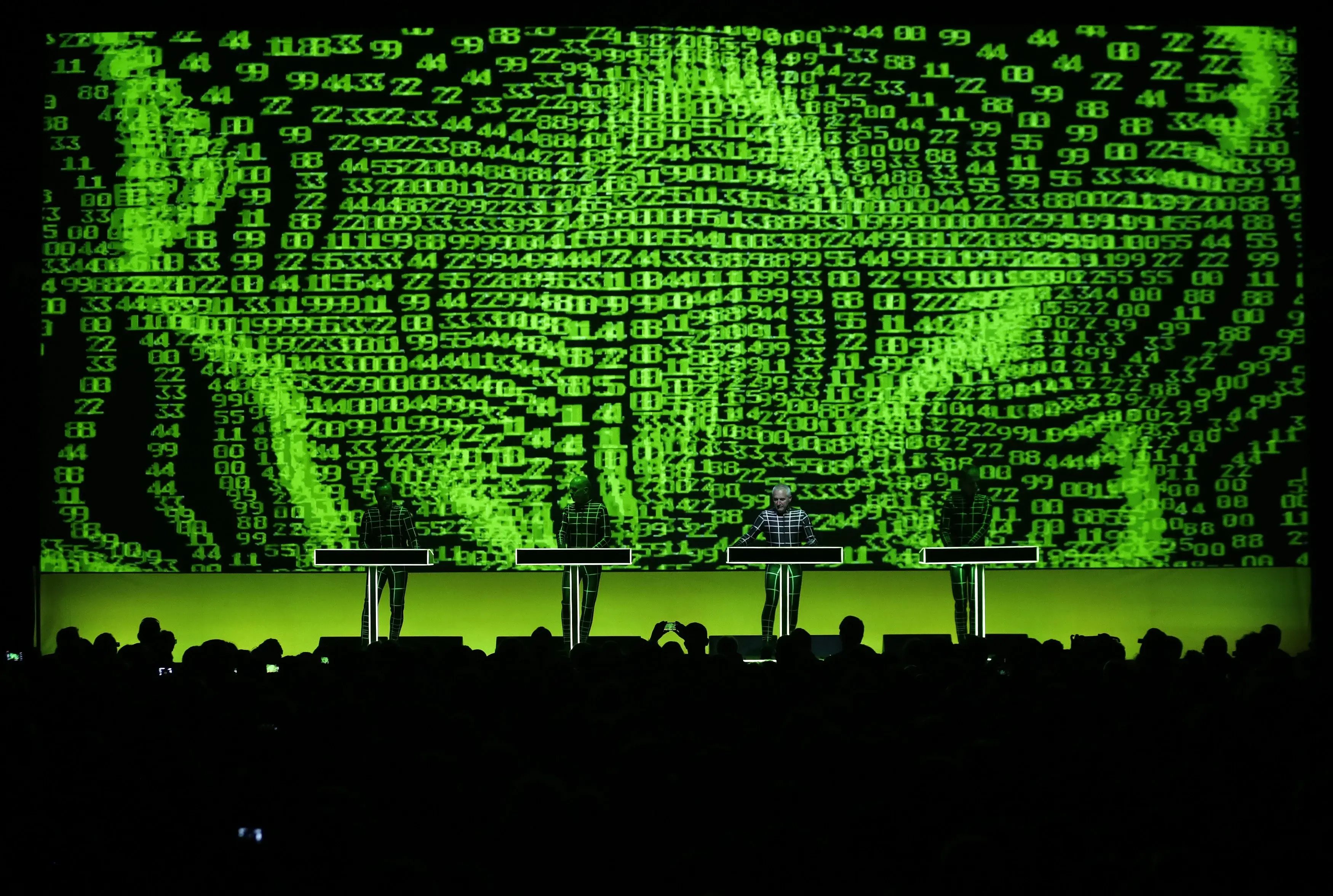Going by their Mastodon account, seems they were erroneously detected as “from a US-sanctioned region” and it took too long for said error to be resolved, so they just made the switch.
f00f/eris
Here to follow content related to Star Trek, Linux, open-source software, and anything else I like that happens to have a substantial Lemmy community for it.
Main fediverse account: @[email protected]
- 1 Post
- 27 Comments
I’m not a classic Linuxer (I switched in 2015) but I did once try Mandrake out of historical curiosity. From what I hear it was the recommended “beginner-friendly” distro before Ubuntu came out. And based on how hard it was to get working on a VM, I now understand why classic Linuxers talk about Ubuntu like it was this huge sea change.

 0·3 months ago
0·3 months agoI’d say they all offer different types of customization. It’s less a matter of how much you can do, and more a matter of what you want to do and how much time you’re willing to spend working on it. KDE is for people who want to customize their desktop, and want it to be easy to do so. GNOME is for people who just want something that works, but it still offers a lot of customization, it’s just not as well-supported (their philosophy is “if theming breaks an app, it’s not our fault”).
KDE doesn’t support full CSS customization on its own, but there are theming engines like Kvantum and QtCurve that address the limitations that arise from this. I’d say it’s on almost equal footing with GNOME in that regard, since both GTK4+libadwaita and Qt6+KF6 are designed for color scheme customization, but require various workarounds and obscure settings for anything more than that. If anything the workarounds are easier in KDE.
Similarly, KDE supports layout customization through widgets and graphical menus. GNOME also supports layout customization, but through extensions instead.
And then you can do all of the above and more if you use a window manager, or an LXDE/LXQt-style desktop that lets you disable or replace all its components in settings - just mix and match components like panels, file managers, display managers, polkit agents, etc. You can basically build your own DE that way, and it doesn’t get much more customizable than that. But maybe you don’t want to spend your time choosing every component of your custom DE. That’s what something like KDE is for.

 13·10 months ago
13·10 months agoSaru and Kelvin Spock would probably get along really well. Everyone else would be having heated arguments that I think would be amazing to witness, if not take part in.
I think I’d most like to sit between Mariner and Pike, though.

 6·10 months ago
6·10 months agoActually, I wonder if this show was greenlit in some way because of Prodigy’s cancellation. They’re trying to draw in a younger audience for the sake of the franchise’s long term prospects, but Prodigy didn’t get as many views on Paramount+ as they hoped (and is now on a different service), so they wanted to make a version of that which is better suited to streaming, without the awkward concessions to Nickelodeon’s release schedule.
Though, I think the problem is really Paramount+. A streaming service that is best known for Star Trek and a bunch of dramas that old people watch, is unlikely to get anyone under 30 to subscribe to it for Star Trek.
Doom was officially ported to Linux in 1994, and a modified version of Linux Doom was made source-available in 1997, then open-source (GPLv2) in 1999. It was one of the first high-quality open-source games. Those versions do not work on current Linux distros, but they have enabled modern source ports such as PrBoom+ and Chocolate Doom to be developed, and those are available in nearly every distro’s repository.

 0·11 months ago
0·11 months agoThe website claims that sponsors have no direct influence on the project (“board seats are not for sale”). The reality is that no project of sufficient scale to fully implement web standards can survive without a significant amount of funding.

 0·11 months ago
0·11 months agoIt’s very new. Previously the system would just drop to a console with a message saying “Kernel panic: not syncing: [reason]” and a whole bunch of debug info.
But still, on a well-maintained system, that pretty much never happens. Mainly because Linux is significantly more resilient to faults in device drivers than Windows.

 5·11 months ago
5·11 months agoI’m against a megathread. That would be too busy and I think there will be more than enough to discuss about each episode.
For entirely selfish reasons, I’d like individual discussion threads for each episode that come out one or two a day, since that’s the pace I expect to be watching it (optimistically).
Though, I think the best option for everyone might be five-episode blocks. That would allow both bingewatchers and slower viewers to enjoy the conversation without spamming the feed, and will match up well enough with the “parts” it would have been split into if it aired on Nickelodeon that both broad and individual episode discussions will make sense.

 4·11 months ago
4·11 months agoYeah, 50% (ram / 2) seems about right.

 11·11 months ago
11·11 months agoThe major tradeoff with zRAM is that programs are much more likely to crash due to running out of memory, but will run faster when memory is running low and freezes are less likely. You can think of it as offloading the pressure that traditional swap puts onto your disk, onto the (much faster) CPU. There will be an impact on CPU usage, but not enough to cause noticeable slowdown; in my experience running Linux, the CPU is almost never the reason something is slow, and is only going to be under significant pressure if you’re running a 3D game in software rendering, compiling a large program, or another complex CPU-bound task.
I wouldn’t recommend making the switch unless you often encounter system freezes or slowness while running tasks that use a lot of RAM (like web browsing on certain sites, or gaming), but it will improve things in that case.
You can install an antivirus, but you really don’t need to. Malware for Linux is rare, and malware that targets desktop Linux users is extremely rare (to the point that it’s a newsworthy story every time it does appear). Most distros have ClamAV and the frontend ClamTk in their repos, but it’s primarily used to scan servers for Windows malware before it reaches its intended target. Some Windows malware can still be harmful if run with Wine/Proton, but unless you’re downloading and running a lot of Windows software from unofficial sources (which you shouldn’t have any reason to) that won’t be a risk.

 62·11 months ago
62·11 months agoI loved The Last Jedi, and that’s one of the reasons why. I can only guess that Rise of Skywalker threw out everything TLJ was setting up because of severe overcompensation to fan reactions.

 6·11 months ago
6·11 months agoApparently some people didn’t like the reveal of Ruby’s parentage, but it was at least in line with the themes of the season in general. I was reminded of Kate and Ruby’s conversation in “73 Yards” - how, where the supernatural is concerned, we invent explanations for things we don’t understand, and they become true. Also early in “Empire of Death” - Davies did a bunch of teasing about a “kind woman waiting with something absolutely vital”, only to have her be an ordinary woman, barely surviving the death wave, waiting to give the Doctor a spoon, which set up the theme of something ordinary becoming the most important thing in the universe.
It would have felt a bit like shallow fanservice if Ruby’s mother turned out to be Sutekh, or Susan Foreman, or herself, or one of the gods, or whatever other theories people had. “Rey Palpatine” and “Rey Skywalker” felt the same way.

 23·11 months ago
23·11 months agoIt’s not systemd’s fault, though systemd most often implements offline updates. The arguments for and against offline updates have nothing to do with systemd.
A lot of Linux distros, and graphical package managers like Discover and GNOME Software, are moving in that direction, under the argument that updating while online can cause disruptions to running software, in the worst case including the package manager itself (which can brick the system if it occurs in the middle of a critical update), and updates can’t be applied until the affected program (or the system, in case of critical components like the kernel) restarts anyway. Fedora Magazine explains the reasoning here: https://fedoramagazine.org/offline-updates-and-fedora-35/
In my personal experience though, I have never had an issue enabling automatic online updates on Debian Stable, and have had computers stay online for several months without any noticeable issues beyond Firefox restarting, so the risk is there but it’s pretty minor.

 0·11 months ago
0·11 months agoDepends on your desktop environment. Look for an “autostart” or “startup applications” setting. If you’re on KDE, this could also be caused by “Restore previous session” under Settings -> Startup and Shutdown -> Desktop Session.
I personally don’t use Arch, but I think the reason so many people find it stable in practice is because they know their system well. When something breaks or needs to be changed, they know which configuration file to edit, which package to {un,re,}install, what to look for in the AUR, etc., and they can usually avoid those things in the first place, because they went through a fairly hands-on install process, not to mention having the best Linux wiki in existence at their disposal.
On top of that, I think a lot of derivatives of Debian, including Ubuntu and all its derivatives, severely undermine their stability by providing custom configurations for or changes to software that are rarely documented and completely transparent to the user… until they break and leave no indication of how to fix them. Which is one reason why I ended up using base Debian.

 0·11 months ago
0·11 months agoFor me, the outdated packages in stable have actually gotten better over time, as DEs get closer to a place where I don’t need any major updates to enjoy using them, Flatpaks become more readily available, and on a subjective level, I get less and less invested in current Linux news. Before Debian became my “forever distro”, I’d hopped to it a few times, and often found myself wishing for a newer piece of software that wasn’t in backports or flathub, or simply being bored with how stable it is, but that’s been happening less and less. And I feel like Debian 12 in particular left me with software that I wouldn’t mind being stuck with for two years.
I’ve gotten warnings to upgrade my browser with Debian’s Firefox ESR, but they never affected a website’s usability in a way that a newer version would fix, and they do provide security updates and new ESR series when they come out; even if you must have the newest Firefox, you can use the Flatpak.
Additionally, I’m currently on testing in order to get better support for my GPU, and each time I’ve tried to use it, it’s worked for me for a longer time than the last as I get better at resolving or avoiding broken packages. If you do experience issues like the one you described, and can replicate them, and no one else has already reported them, you should report them to Debian’s bug tracker. The whole point of Testing is to find and squash all the critical bugs before the next stable releases.

 0·11 months ago
0·11 months agoI always keep close track of these contests, it’s fun to take a look at all the different concepts. Though IIRC only Juliette Taka (who designed the themes for 8, 9, and 11) even submitted a theme last time. She’s great, and Emerald is great, but I hope this post gets someone even better involved with the artwork.


Just as long as it isn’t a .rar.